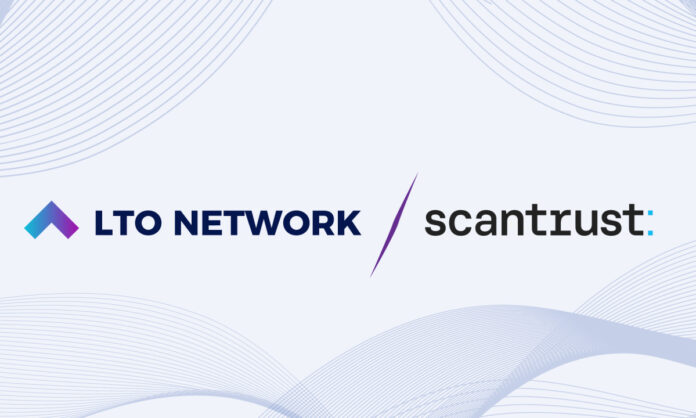You receive or finalize your organization’s latest content marketing strategy. That means you’re ready to jump right into creating great content, right? Not so fast, friend. Sorry to tell you, but that strategy is a virtually useless piece of (digital) paper unless you have a content plan, too. Why? Because knowing your goals isn’t the same as knowing how to achieve them. A detailed content plan gives you the keys to unlock that knowledge. It outlines all the operational, technical, and tactical details that will guide and support your content efforts. One-size-fits-all content plan templates don’t exist — every brand has a unique set of goals, assets, and considerations to account for. But here’s the next best thing: a detailed tutorial with expert-recommended resources to make crafting a winning content plan easier. At the end of this article, you’ll also find a handy checklist to refer to as you build your plan. But before you roll up your sleeves and get to work, let’s answer a few fundamental questions: What is a content plan? A content plan documents all the specific policies, practices, resources, and task-related decisions required to execute your content strategy. It serves as a guide for orchestrating your content resources and systems. It also governs your techniques and collaborative workflows and establishes parameters around your story creation and production processes. A content plan helps ensure your team has the right tools and resources to produce marketing content efficiently and deliver a valuable, high-quality experience to your audience. Is a content plan the same thing as a content strategy? Though these fundamental content marketing elements are closely intertwined, they’re not interchangeable. To understand the difference, think of how you might create a mood board for a personal goal. Your content strategy sits at the top of your board, representing what success looks like to you. It sets the stage by documenting the goals you want to achieve, who else might be involved in (or benefit from) your achievement, and what will make it a distinctly satisfying experience. It also establishes an overarching theme around the unique ideas and insights that characterize your vision. Your content plan, on the other hand, outlines all the specific steps you’ll take as you activate your vision. It’s where you characterize what needs to happen (and how) and what the resulting efforts should look like. How do I develop a content plan? Building your content plan can seem intimidating. You’ll need to orchestrate many parts, and each must align with your marketing goals and team dynamics. Fortunately, if you break down your content plan into four focal areas, all the tasks should come into sharper focus, making the process much more manageable. Here’s the good news: If your team has worked out its content operations framework, the first three are done already. The four areas are: Governance and guidelines —the editorial quality standards, preferred practices, and guiding principles that define and distinguish the value of your brand’s content Processes and systems —your production tasks, workflows, routing practices, and the techniques and technologies you’ll use to make communication and collaboration as friction-free as possible Team resources — the roles that need to be in place, skills those tasks require, and details on how you’ll fill gaps that might emerge Content creation and delivery — the topics your creative team will focus on, how they’ll generate and prioritize ideas for those topics, and what content types, formats, and platforms you’ll leverage. But don’t forget: The conditions you operate under today won’t stay the same forever. So, your plan should also account for how you’ll adapt to shifting business priorities, emerging tech trends, audience preferences, and other changes over time. Take a shortcut: Save some time when building your plan by starting with one of these five strategic content planning frameworks. 1. Set your guidelines and governance policies Governance lies at the heart of every editorial program. The decisions you make – and the guidelines you set – will define and distinguish your brand’s content experience. It also solidifies the ways your audience should benefit from engaging with it. At a minimum, you should start by documenting your standards, practices, and principles in two key areas: How your brand will communicate with your audience How your content will help your audience. Define your content’s signature tone, voice, and style Outline the qualities and characteristics that make your brand’s content recognizable and distinct from everyone else’s. Clearly define details like the preferred tone, brand voice, and style standards (for both text and visuals). These guidelines help ensure consistency across all your content channels and platforms. Hot tip: Checkr’s Sasha Laferte Cuneo outlines how to write a style guide for your brand. This process will help you build one quickly if you don’t already have one. Establish editorial quality and value standards Your editorial content team should be the keeper of the standards that make your content worthy of your audience’s attention. Poor or inconsistent quality can hinder content performance and poorly reflect your brand’s value and reputation. If you need help deciding what standards to include in your content plan, refer to Ahava Liebtag’s Must-Have Checklist for Creating Valuable Content. It outlines five essential benchmarks to consider as you work to produce a high-quality content experience: Findability Readability Understandability Actionability Shareability The checklist also suggests attributes and elements that should factor into your creative process so your stories will earn high marks in all five areas. 2. Build your operational infrastructure and processes In addition to establishing criteria for your output, your content plan should also cover your team’s input — how all the work gets done. That includes: Defining the tasks to complete, processes for completing them efficiently, and how the work will flow through all content creation, production, and deployment stages Determining how team members will collaborate efficiently and communicate effectively Implementing mechanisms that will enable team members to stay focused and produce quality work Identifying and coordinating the tools and technologies they’ll use in their work. Define the workflow and build critical processes If you don’t define the steps, signoffs, and stakeholders involved in transforming ideas into assets, you risk experiencing avoidable breakdowns and bottlenecks. Tasks can slip through the cracks, necessary approvals may get overlooked, and even minor errors and setbacks can quickly snowball into productivity nightmares. Having a clear workflow and efficient processes takes the guesswork out of content marketing, making everyone’s jobs easier to manage. It also helps each contributor understand how their efforts fit the big picture of content success. Start by understanding the difference between a workflow and a process: A workflow is a set of tasks for producing a content asset, organized sequentially. A process defines how your team will execute tasks in their workflow so the work gets done efficiently and with as little friction or disruption as possible. Ready to start building? Follow these 5 Steps To Build a Content Operations Workflow That Helps Everybody. If your existing workflows or processes aren’t working as well as they used to, consider trying one of these 3 Agile Fixes To Keep Your Marketing Operations Humming. You can also consider planning your content in short-term, iterative stages. Following an agile planning approach gives your team the direction they need today while avoiding the need to rebuild your plan when new opportunities or transformational changes emerge. It minimizes the risk of creating content that no longer suits your audiences’ needs or your brand’s priorities. Promote smooth collaboration and communication Once you’ve defined the workflow, help your team members understand their role in content creation – and how it impacts and overlaps with the responsibilities of everyone else involved in your content program. That clarity helps when new business goals, industry conditions, or audience trends emerge and the demand for content increases. The added strain can quickly overwhelm your team’s communication ability, leading to confusion, collaborative friction, and missed deadlines. One way to combat the overload is to empower your team members to take better control over their tasks. In How To Tame Content Tasks With These 5 ‘Cheat Codes,’ you’ll find a handy process for setting practical priorities to keep important work from falling through the cracks. The best defense against these disruptions is a good offense. A detailed editorial calendar provides clarity so all team members can see where assets are in the production…























